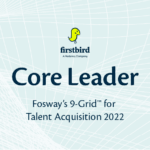Get Started With Employee Referrals
In addition to job advertisements, large companies rely more and more on their own talent pool for recruiting. This database of prospective candidates collects and stores profiles of both current and former employees, promising applicants, and future talents. The relevant CVs come either from the application process, personal contacts or professional networks.
An extensive talent pool enables recruiters to rely on suitable candidates for vacant positions whenever they need them. However, eligible candidates for a vacant position cannot always be found in such a pool. In that case, an employee referral program can help reach qualified applicants quickly and efficiently. So, how does it work?
Employees involved within the referral program or external referrers share job advertisements and open positions with friends, acquaintances and former colleagues in their networks. When an application provided by external or internal referrers- Talent Scouts- leads to successful hiring, the Talent Scout receives a reward, usually a cash bonus.
Compared to traditional recruiting methods, companies can develop a much broader outreach to the workforce with the help of referral programs. This is especially true when job ads have a good circulation within your employee networks containing a highly qualified workforce and future talent. Since all top performers are well connected, through referral recruiting, companies can take advantage of these existing networks instead of building their own.
Employee Referral Programs – As Old as the World
In this day and age, many different industries around the globe make use of employee referral programs. As well as for gaining customers, the so-called word-of-mouth also plays an important role in recruiting. In the digital age, this has become of ever-increasing importance, partly because of social recruiting.
As in the sales process, in which many companies offer their customers discounts or rewards for recommending their products to their acquaintances, the Talent Acquisition specialist rewards Talent Scouts for submitting referrals. “Bring a friend” is a lucrative business strategy used by many providers in many industries. When it comes to talent acquisition, this is seen in the form of recruiting via referrals.
In recruiting, rewards in exchange for referrals are almost as old as our modern culture. Even the Roman general Julius Caesar used to offer a reward of 300 sesterce to any legionary able to recruit soldiers for the Roman army.
Back to the present, almost 80% of companies use employee referrals in recruiting. After all, referral recruiting is a highly beneficial strategy for companies: current employees know precisely the essential requirements of a vacant role and what soft skills and industrial knowledge applicants must have.
At the same time, you can trust your Talent Scouts because it’s in their best interest to provide good quality referrals and well-suited candidates since the referred hire will be their colleague who they’ll work with daily.
What Are the Differences Between Internal and External Referrals?
With an employee referral program, companies can reach a considerable number of well-qualified prospective candidates. They are often highly qualified professionals in close proximity and on your employees’ radar. Despite this, you wouldn’t be able to approach them via traditional recruiting channels because they are not actively looking for a new occupation.
These potential candidates represent the so-called passive workforce, that is, talents who are not actively seeking a new job but are open to a more profitable employment opportunity if it arises. According to a LinkedIn survey, this group of passive job seekers makes up 70% of the global workforce in the labour market.
Other advantages of employee referrals are that Talent Scouts act as authentic and trustworthy company brand ambassadors. Satisfied and happy employees committed to a company are the best publicity for your employer brand. Your candidates won’t doubt the quality of your working conditions and company culture, and it will take them less time to accept your job offer. Another advantage of referrals is that both candidates and companies save time checking whether they are a good cultural fit. Being the bearers of the company culture and knowing their referrals personally, Talent Scouts usually refer well-matched candidates.
Compared to internal referrals provided by your current employees, availing of external referrers contributes to widening even more companies’ outreach to the workforce. Whether partners, customers, former employees or interns, external referrals offer great potential.
They can double the number of Talent Scouts involved within the referral process and accordingly multiply incoming referrals. They can also lead to higher job views because Talent Scouts promote job ads on different communication channels.
3 Steps to a Successful Employee Referral Program
With all the ongoing changes in the world of work, alternative recruitment methods will become more prevalent. Our generation of employees are more connected than ever through digital communication technologies, and will only become more so in the future, thereby allowing the creation of infinite networks and thus talent pools.
Therefore, companies threatened by the shortage of skilled workers can benefit from extensive employee referral programs.
Step 1: Win allies within the company
Managers and decision-makers are critical for the success of employee referral programs. After all, both the implementation of the referral platform and the satisfaction of hiring needs require an investment. A well-outlined implementation plan and the long-term profit calculations can persuade the management board to implement an employee referral program.
Firstbird’s referral experts will check with you whether employee referrals are the right recruiting channel for you and your company and will guide you through top-performing referral strategies in a free consulting call. They include additional strategies of relying on external Talent Scouts for referral recruiting and introducing external referrals into your existing employee referral program. Overall, decision-makers are most often interested in the hard facts: if you have all the information at hand, the chances of getting an OK for the implementation increase.
Furthermore, to facilitate your decision of introducing an employee referral program, Firstbird will also provide you with a well-developed referral platform and support before and after its implementation. Book a demo here.
Step 2: Communicate the introduction of an employee referral program to your employees efficiently
The better an employee referral program is thought through, the more successful it is. The most critical step of the implementation process is setting clear goals. The following questions might help you towards formulating them:
- How many referrals do you want to receive in a certain time period?
- Should referrals be oriented to a specific vacant position, or should they be freely addressed?
- Who should be the stakeholders of your referral process?
- How extensive should your referral network be?
- What do you mean by a “successful referral?”
- How do you want to reward referral activities?
It is also important to explore the financial framework and the possibilities to involve externals in referral recruiting at the beginning of the process. This prevents from raising wrong expectations that can not be fulfilled. An essential part of the strategy should also regard the referral process itself. Precise guidelines on submitting the referrals and receiving updates on their status and rewards for referral activities should be forwarded to your employees from the start to avoid misunderstandings and confusion.
It is advisable to promote employee referrals through various communication channels to receive more incoming referrals. Successful strategies to boost your referral process include:
- Launching an effective communication campaign to introduce the employee referral program to your staff
- Sharing and promoting the employee referral program on social media
- Promoting the employee referral program on the company’s website and career page
- Promoting the employee referral program on job portals and related job boards
- Referring to the possibility of submitting referrals via the company’s email signature
- Distributing flyers and brochures on the employee referral program
3. Stick to the referral guidelines
The employee referral program can be launched as soon as the referral platform and the corresponding promotional campaign are ready. After the launch, however, the project is by no means completed for the HR department. From then on, the incoming referrals must be processed and handled according to the previously set guidelines. Additionally, high quality referred applications should be added to the company’s talent pool.
The reassessment and further development of the employee referral program are also crucial for its long-term success. Therefore, statistics on the referral process and performance measures should be analyzed to assess referral KPIs better and adjust referral goals accordingly.
Conclusion
Combined with a well-thought implementation and a good communication campaign, employee referral programs are essential for a modern recruiting strategy. Without a broad outreach to the qualified candidates, companies couldn’t select the most suitable professionals for their vacant positions or expand their talent pool with such little effort.





















